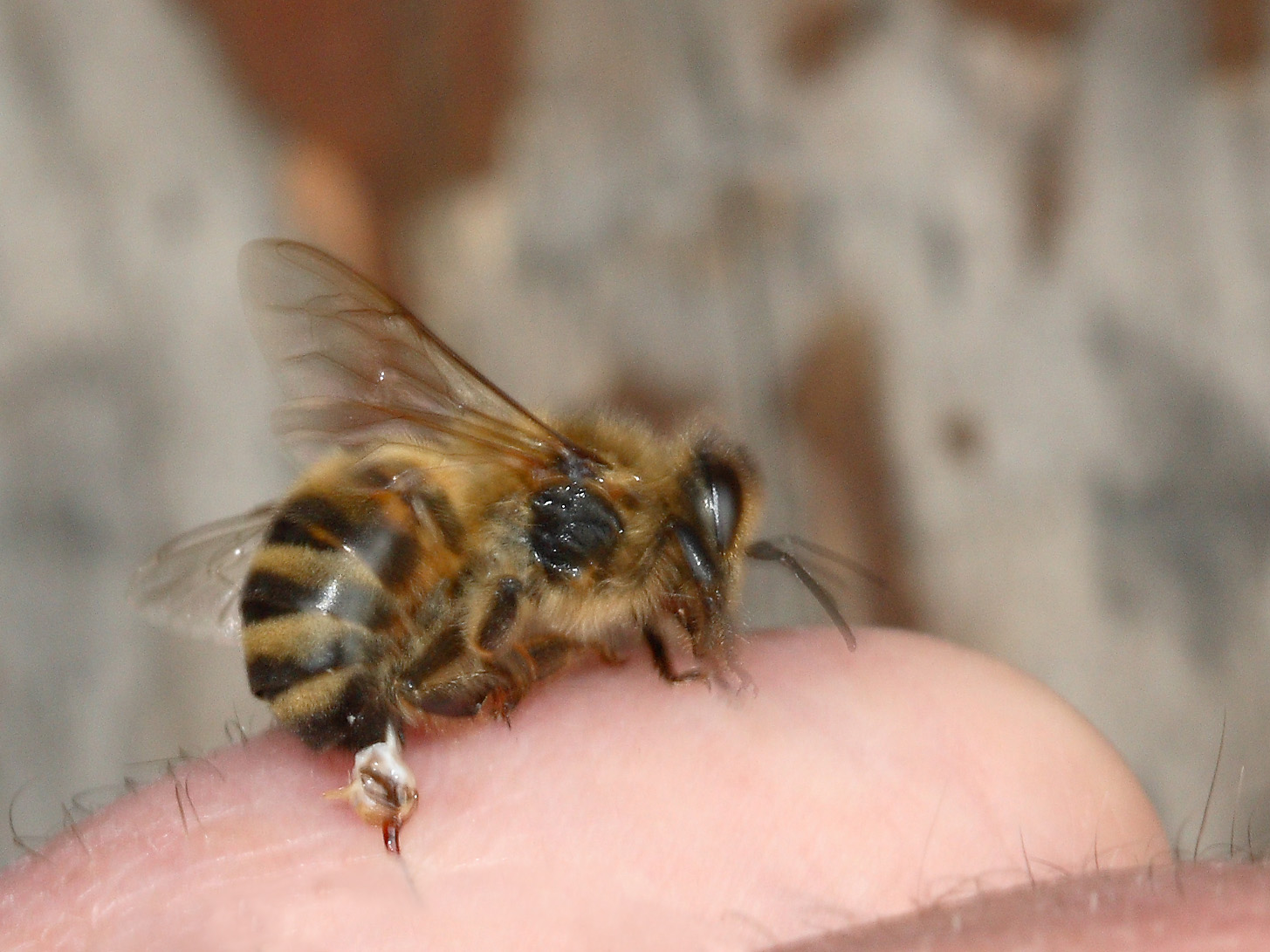Bees sting when they are afraid, when they have been harmed or attacked, or when their hive is in danger.
A worker bee that is out scouting or foraging flowers will not sting unless she is harmed, handled roughly or frightened. So if she were accidentally stepped on, she would try to sting. Or if she accidentally flew into a person's hair, she could become tangled up and afraid and then maybe sting.
2) What happens when a bee stings?
When a bee stings, she releases a certain chemical smell, called an alarm pheromone. Other bees that smell the alarm pheromone will come to help fight off the threat.
Her barbed stinger will get stuck in the skin of a mammal or bird. This kills her because her stinger will stay in the other animal when she walks or flies away, pulling part of her body apart.
photo: Waugsberg
The bee's stinger has a poison sac that will pump venom for up to ten minutes after stinging. It is important to remove the stinger from a person's skin as quickly as possible. The method of removal is not nearly as important as getting it out fast.
photo: Siga
The venom of the bee causes an allergic reaction. The area that is stung will swell, itch, and be painful for a few days. Some people are very sensitive to bee venom. These people will have a severe allergic reaction to a bee sting and will need immediate medical care. Bee stings can be deadly for those people who are allergic to them. Otherwise, bee stings are generally mild and go away quickly.
3) List some other animals and their defensive behaviors.
There are many different kinds of defensive behaviors that animals use. Here are just a few examples:
Skunks use smell to defend themselves. They will spray an especially strong stink at their attackers.
Bulls, rams, rhinoceros and other horned animals use their horns to defend themselves.
Snakes and lizards use their sharp teeth to bite their attacker, often with venom.
Can you think of even more defensive behaviors that animals use to protect themselves?










No comments:
Post a Comment